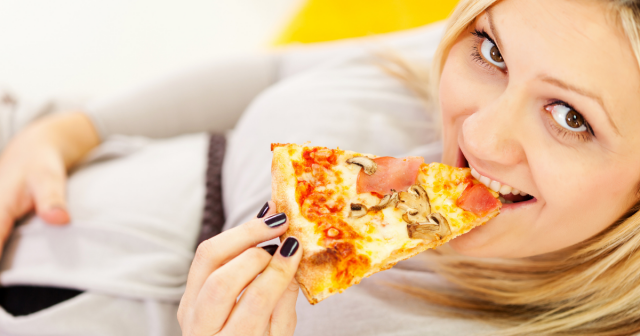One of the toughest obstacles we face when embarking and building healthy habits is sticking to them.
We need to consider using a strategy to enable us to form healthy habits that are sustainable.
So what strategy can we use to improve our chances of building healthy habits into our lives and sustaining them.
HEALTHY HABITS STRATEGY
With every habit, there must be a reward for you to continue with the habit. That’s why the process of making a habit must be obvious, attractive, easy and satisfying.
The book, Atomic Habits by James Clear uses a four-step loop that underlies all human behaviour. Cue, Craving, Reward and Response. This is called a Healthy Habit Loop by James Clear.
James Clear develops Four Laws of Behaviour Change from these steps:
- Cue: Make it obvious
- Craving: Make it attractive
- Response: Make it easy
- Reward: Make it satisfying
So let us look into these laws and how they could help to build healthy habits.

building healthy habits
THE 1ST LAW
Making the habit obvious. This is our first cue and making the habit obvious gets our attention.
Example – You are trying on last year’s summer clothes and the button on your shorts seems to have shifted towards your hip bone and it is now impossible to do the bloody thing up. The cue is obvious. Reduce body fat.
Lots of marketing companies use this first law of making the habit obvious to get your attention. They send you emails, advertise on television, light up your phone screens with loud bright ads and repeatedly send notifications. They are fulfilling the 1st law of behavioural change by being obvious. You need to change.
The more emails, text messages, alerts that are sent, the more likely the cue will be obvious. This is the strategy used by big companies.
Our cue is obvious, Last year’s summer shorts no longer fit. You cannot wear them. Its captured your attention and this will inhibit a habit change.
THE 2ND LAW
The next step is to make the behavioural change attractive and the law is connected to the second step in the habit loop, craving.
Every behaviour is proceeded by a prediction. Your behavioural habit to reduce your waistline by healthy eating and increasing exercise will be proceeded by the prediction that you will loose weight and fit into your shorts.
The craving of fitting into the shorts makes the outcome attractive.
This is why a diet and exercise plan must fulfil the first 2 laws of behavioural change.
THE 3RD LAW
So we’ve got through the first 2 laws of behavioural change. The 3rd law is making the response easy.
The response is the actual behaviour or habit that you perform. As we know, habits are easier to perform if they are straightforward.
The promise of high intensity interval workouts (HIIT) and/or meal replacements and diets and shakes are all built on short-term gains. However, longevity of these programmes are not the companies concerns.
But they do work in the short-term and are successful. The promise of a long-term strategy of weight loss and health is far less appealing than the promise of a 3 month gruelling fitness regime which will see you shift pounds every week.
That’s why diet companies and HIIT classes are so successful. They offer the easy quick fix.
And I do apply this strategy to my clients if they need to reach a target quickly. But as far as building healthy habits long term, a coach needs to make the process attractive and easy to become a habit. This is what differentiates the top PT’s from the average ones.
THE 4TH LAW
The 4th law of behavioural change is make the habit satisfying.
The reward associated with the 4th law of behaviour change is good and positive.
If we get the first 3 habits completed, (make it obvious, make it attractive and make it easy) we increase our odds that positive behaviour will continue. By making the habit satisfying and completing the loop, the odds are increased that the habit will be repeated.
This completes the 4-step loop.
The speed of the reward in the 4th law is essential for the habit to continue. If you loose 5kgs in the first month, you are likely to repeat the habit that initiated that weight loss. No loss, no reward, the habit dies.
This behaviour that makes you feel good is likely be repeated. It gives you immediate satisfaction.
HOW TO BREAK UNHEALTHY HABITS

unhealthy habits
- Reduce exposure. Reduce the cues of your bad habits from your environment – don’t buy ice cream!
- Reframe your mindset. Highlight the benefits of avoiding bad habits – see the difference on the scales by avoiding ice cream.
- Increase friction. Increase the number of steps between you and bad habits – reduce your budget for your weekly food shop so ice cream becomes too expensive.
- Restrict your future choices to the ones that benefit you – don’t go down the ice cream aisle.
- Ask someone to watch your behaviour – get a friend onboard to help you get that beech figure.
- Make the costs of your bad habits public and painful – send your daily weigh-ins to your PT – be accountable. Penalties for heavy weigh-ins.
HOW TO BUILD HEALTHY HABITS
THE 1ST LAW – MAKE IT OBVIOUS
- Write down your current good habits to become aware of them.
- Implement intentions of behaviour and times and locations – Personal Training at 6pm Tuesday in the park.
- Habit stack – After every PT session and Body Pump class, I will not have a dessert.
- Design your environment – Have gym clothes in your kit bag ready on Body Pump day. Ensure your diary is clear of meetings or distractions at time of class.
THE 2ND LAW – MAKE IT ATTRACTIVE
- Use temptation bundling. Pair an action you want to do with an action you need to do – Cycle/walk to work instead of taking public transport and cycle/walk back home on non gym days.
- Join a culture where your desired behaviour is the normal behaviour – join a running group.
- Create a motivational ritual – drink a pint of water 20 minutes before dinner to make you feel fuller, therefore consuming less calories.
THE 3RD LAW – MAKE IT EASY
- Reduce friction. Decrease the number of steps between you and your good habits – don’t have ice cream in the house.
- Prime the environment. Prepare your environment to make future actions easier – pre book your personal training sessions and fitness classes a week in advance.
- Use the 2 minute rule. Downscale the new good healthy habit so that it can be done in 2 minutes – Wait 2 minutes before eating that extra serving of food or jump on a new exercise machine for 2 minutes. Always start with 2 minutes and build-up. You can do this!
- Automate your habits. Invest in technology and onetime purchases that lock in future behaviour – Automate MyFitnessPal to ping you if you haven’t logged your food for the day. It’s about being accountable.
THE 4TH LAW – MAKE IT SATISFYING
- Use reinforcement. Give yourself an immediate reward when you complete your habit – Saturday morning 5k park runs are organised all over the country and could be used for building a healthy habit. If you run 5k at the Park Runs on a Saturday morning, you reward yourself with a bacon sandwich (wholemeal bread and farm shop bacon of course!)
- Make ‘doing nothing’ enjoyable. When avoiding a bad habit, design a way to see the benefits – meditation and reading positive educational books on health, fitness and weight loss are sone ways to motivate you towards building healthy habits. Have a massage.
- Use a habit tracker. Keep track of your habit streak and don’t break the chain – MyFitnessPal is a great app to log food intake and exercise or you could simply log all your training sessions and ensure you at least match the previous week.
- Never miss twice. When you forget to do a habit, make sure you get back on track immediately – this is where a coach or PT can really help #fitnessmotivation.
Get into the habit of taking action. Build those healthy habits and see the rewards.

